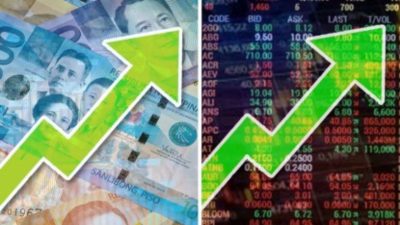MANILA – The Bangko Sentral ng Pilipinas (BSP) on Friday reiterated its commitment to adjusting its policy stance to address the expansion of price pressures even as the domestic inflation rate continues to ease.
The rate of price increases slowed further to 4.7 percent in July, the lowest since March 2022, from the previous month’s 5.4 percent and the previous year’s 6.4 percent, bringing the year-to-date average to 6.8 percent.
In a statement, the BSP said the deceleration is in line with its expectations of a sustained slowdown to between 4.1 and 4.9 percent in July, and to within the government’s 2 percent to 4 percent target band in the last quarter of this year without any supply shocks.
However, it said upside risks continue to dominate the environment due to the “potential impact of additional transport fare increases, higher-than-expected minimum wage adjustments in other regions, persistent supply constraints of key food items, El Niño weather conditions, and possible knock-on effects of higher toll rates on prices of key agricultural items.”
These factors are expected to be countered by “the impact of a weaker-than-expected global economic recovery.”
“The BSP stands ready to adjust the monetary policy stance as necessary to prevent the further broadening of price pressures, as well as the emergence of additional second-order effects in view of the persistent upside risks to the inflation outlook,” it said.
The central bank said it “continues to support the timely and effective implementation of non-monetary government measures to mitigate the impact of persistent supply-side pressures on inflation.”
BSP policy rate impact
In terms of the month-on-month change in the headline inflation rate, Rizal Commercial Banking Corp. chief economist Michael Ricafort said the rate was 0.1 percent last July, slower than the previous month’s 0.2 percent.
He attributed the decline to the impact of lagged effects of recent storm damage that resulted in higher prices of some agricultural products, as well as higher prices of domestic fuel prices and the rise in the minimum wage in Metro Manila.
In a reply to questions sent through e-mail by the Philippine News Agency (PNA), Ricafort said he expects the easing of the inflation rate to slow a bit in the coming months because of these factors’ lag effect.
He, however, remains optimistic that the monthly rate would decelerate to within the target level in the last quarter of the year.
With these developments, Ricafort forecast the BSP to either keep its key rates steady or hike them by 25 basis points during the rate-setting meeting of the policy-making Monetary Board (MB) on Aug. 17, 2023.
“A possible +0.25 local policy rate hike to match the latest +0.25 Fed rate hike on July 26, 2023 would aim to maintain healthy interest rates differentials to help stabilize the peso exchange rate vs. the US dollar, import prices/costs, and overall inflation,” he said.
Ricafort said “a pause on local policy rates would be possible if the peso exchange rate is relatively stable or stronger vs. the US dollar, as a pause in local policy rates may also be justified by the easing trend in inflation or disinflation largely due to higher base/denominator effects.”
He said market participants recently discounted further hikes in the Federal Reserve’s key rates after the 25 basis points increase in the Federal Reserve fund rates last July as inflation continues to ease even in the US.
Ricafort said projections for inflation to slow down to about 4 percent from August to September, and further to 3 percent from October to December, and 2 percent or lower in the first quarter of 2023, “could fundamentally lay the future groundwork to eventually justify local policy rate cuts.”
This possibility, he said, is more likely “especially if the US central bank/Fed starts cutting rates, especially in 2024 as expected by the markers and signaled by some Fed officials, as well as support faster GDP (gross domestic product)/economic growth going forward amid reduced drag from inflationary pressures.”
“Possible cut in Fed and local policy rates for the coming month, especially in 2024, would also help reduce borrowing/financing costs and, in turn, support faster economic/GDP growth,” he added. (PNA)







